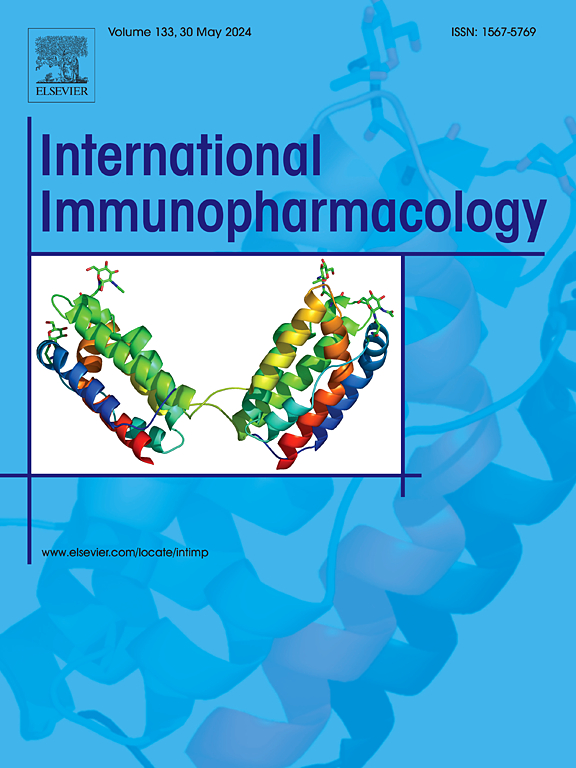肺部抗中性粒细胞细胞质抗体相关血管炎的综合特征和死亡率预测图的发展。
IF 4.8
2区 医学
Q2 IMMUNOLOGY
引用次数: 0
摘要
目的:抗中性粒细胞细胞质抗体(ANCA)相关性血管炎(AAV)是一种罕见的、潜在的致命性疾病,死亡率高,经常累及肺部。我们的研究旨在探讨AAV的肺部特征,并确定长期生存的预测因素。方法:回顾性分析2013年1月至2019年7月诊断的538例AAV患者,随访数据延长至2020年8月。采用最小绝对收缩和选择算子(LASSO)回归分析来确定预测死亡率的变量。随后,建立了一种模态图,分别用一致性指数和校准曲线来评估其预测准确性和判别性。结果:共有460例(85.5%)AAV患者表现为肺部受累。死亡率为36.8%。肺部受累的患者更常出现呼吸系统症状,影像学上以间质性肺疾病为主,呼吸衰竭、弥漫性肺泡出血、机械通气和死亡的风险更高(P)结论:本研究建立了AAV死亡率的预测模型,准确性高,为患者护理提供了重要的见解。肺部受累性疾病普遍存在并与较高的死亡率相关,因此需要在AAV管理中使用精确的预测工具。本文章由计算机程序翻译,如有差异,请以英文原文为准。
Comprehensive characteristics of pulmonary antineutrophil cytoplasmic antibody-associated vasculitis and the development of a predictive nomogram for mortality
Objectives
Antineutrophil cytoplasmic antibody (ANCA) associated vasculitis (AAV) is a rare and potential devastating disease with high mortality, frequently with pulmonary involvement. Our study aimed to explore the pulmonary features of AAV and identify predictors of long-term survival.
Methods
We retrospectively analyzed 538 AAV patients diagnosed between January 2013 and July 2019, with follow-up data extending to August 2020. The Least absolute shrinkage and selection operator (LASSO) regression analysis was employed to identify variables predictive of mortality. Subsequently, a nomogram was developed, with its predictive accuracy and discrimination assessed by the concordance index and calibration curves, respectively.
Results
A total of 460 (85.5 %) AAV patients presented with pulmonary involvement. The mortality was 36.8 %. Patients with pulmonary involvement more frequently exhibited respiratory symptoms, predominantly interstitial lung disease on radiographs, and were at higher risk for respiratory failure, diffuse alveolar hemorrhage, mechanic ventilation and death (All P < 0.05). The LASSO regression pinpointed 16 predictors of mortality, and the predictive model demonstrated an area under the curve of 0.810. The nomogram, based on these variables, achieved a concordance index of 0.825, with calibration curve indicating excellent predictive agreement.
Conclusion
The study establishes a predictive model for AAV mortality with high accuracy, offering insights crucial for patient care. Pulmonary involvement, prevalent and linked to higher mortality, underscores the need for precise predictive tools in AAV management.
求助全文
通过发布文献求助,成功后即可免费获取论文全文。
去求助
来源期刊
CiteScore
8.40
自引率
3.60%
发文量
935
审稿时长
53 days
期刊介绍:
International Immunopharmacology is the primary vehicle for the publication of original research papers pertinent to the overlapping areas of immunology, pharmacology, cytokine biology, immunotherapy, immunopathology and immunotoxicology. Review articles that encompass these subjects are also welcome.
The subject material appropriate for submission includes:
• Clinical studies employing immunotherapy of any type including the use of: bacterial and chemical agents; thymic hormones, interferon, lymphokines, etc., in transplantation and diseases such as cancer, immunodeficiency, chronic infection and allergic, inflammatory or autoimmune disorders.
• Studies on the mechanisms of action of these agents for specific parameters of immune competence as well as the overall clinical state.
• Pre-clinical animal studies and in vitro studies on mechanisms of action with immunopotentiators, immunomodulators, immunoadjuvants and other pharmacological agents active on cells participating in immune or allergic responses.
• Pharmacological compounds, microbial products and toxicological agents that affect the lymphoid system, and their mechanisms of action.
• Agents that activate genes or modify transcription and translation within the immune response.
• Substances activated, generated, or released through immunologic or related pathways that are pharmacologically active.
• Production, function and regulation of cytokines and their receptors.
• Classical pharmacological studies on the effects of chemokines and bioactive factors released during immunological reactions.

 求助内容:
求助内容: 应助结果提醒方式:
应助结果提醒方式:


